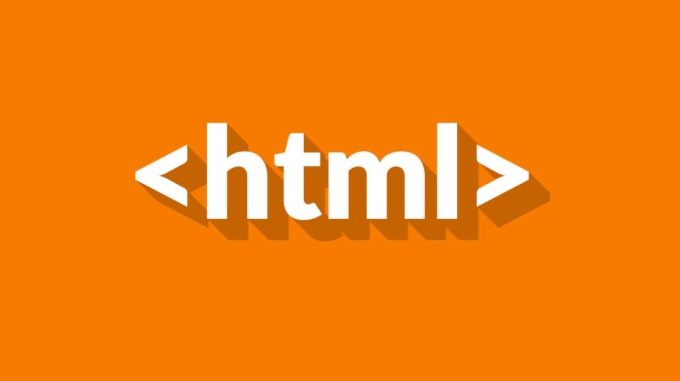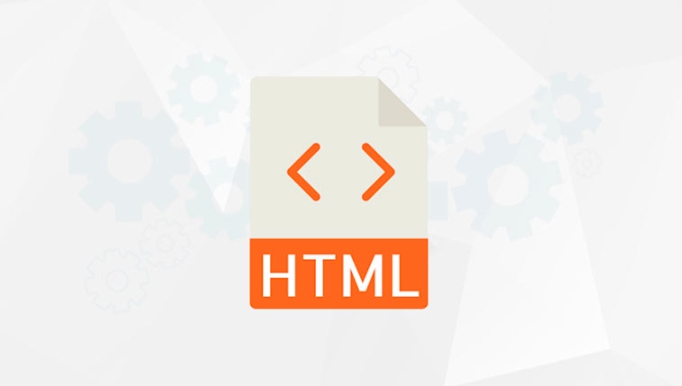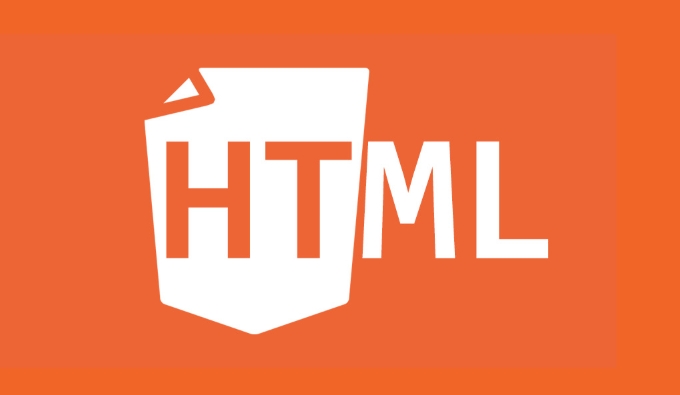The robots meta tag is used to control search engine crawlers' inclusion and link tracking of web pages. It tells search engines whether to allow inclusion of pages (index/noindex) and whether to allow tracking of links in pages (follow/nofollow) by adding directives in the HTML page (head> area). Common usage scenarios include: 1. Use noindex when you do not want the page to be included; 2. Use nofollow when you prevent crawlers from tracking specific links; 3. Multiple instructions can be combined to achieve finer control. Unlike robots.txt, robots.txt is used to restrict crawlers from accessing website directories, while robots meta tags are page-level controls, and the two work better together. Notes include: non-compliant crawlers may ignore settings, Google may still display page information due to external links, and HTTP versions need to be configured separately.

Search engine crawlers are one of the key factors in whether website content can be discovered. You may have written the content of the web page, but if you do not set up the robots meta tag for HTML, search engines may ignore you and even include content that should not be included. How do you want to control the crawler to crawl your page? The key lies in this meta tag.

What is robots meta tag?
robots meta tag is a directive placed in the area of the HTML page, telling search engine crawlers how to deal with the current page. It's not mandatory, but most mainstream search engines respect this setting.
The basic writing method is as follows:

<meta name="robots" content="noindex, nofollow">
-
name="robots"means that this is the instruction for all crawlers to see. - The value in
contentdetermines the specific behavior.
Common content values include:
-
index: Allows to include pages -
noindex: Do not include pages -
follow: Track the links on the page -
nofollow: Don't track links
Common usage scenarios and suggestions
Don't want the page to be included? Use noindex
If you have some pages that you don't want to appear in search results, such as "Thank you page", "Internal test page", or "Repeat content page", you can add:

<meta name="robots" content="noindex">
In this way, search engines will not add these pages to the index and users will not be able to search.
Tip: If you just want to prevent Google from inclusion, you can also submit a "removal" request through Google Search Console, but using meta tags is a more general approach.
Don't want the crawler to track the links on the page? Add nofollow
Sometimes you have some links on your page, such as user links, advertising links in the comments section, or links that you don't want to pass weights, you can use:
<meta name="robots" content="nofollow">
This way the search engines will not continue to crawl along these links.
For example: You have a forum page, and many of the links posted by users are spam links. Adding
nofollowcan prevent search engines from taking these links as recommendations.
Multiple instructions can be used in combination
You can use multiple behaviors at the same time, such as:
<meta name="robots" content="noindex, nofollow">
It means: Don't include this page, and don't track the links inside.
It can also be the other way around:
<meta name="robots" content="index, follow">
This is the default behavior for most pages, but it is sometimes safer to write it explicitly.
What's the difference with robots.txt?
robots.txt is a file in the root directory of the website, used to control whether the crawler can access certain directories or files. It is more like a "gate guard" telling the crawlers where they cannot enter.
robots meta tag is a page-level control, which is more like a "tip sign in the room", telling the crawler whether the contents of the room can be included and whether they can continue to explore.
The two work better together. For example, you use robots.txt to prohibit crawlers from accessing the /admin/ directory, and at the same time use noindex in some pages to prevent them from being included.
Things to note and places to ignore
- Not all crawlers follow : Some unruly crawlers may ignore your settings, so you can't expect it to protect sensitive information.
- Google has its own judgment : Even if you add
noindex, Google may still display your page title and URL for some reason (such as too many external links). - The HTTPS page and the HTTP page should be set separately : If you have two versions, HTTPS and HTTP, their meta tags should be configured separately, otherwise there may be problems.
Basically that's it. Setting robots meta tags is not complicated, but it is easy to ignore details. If used well, it can help you control more carefully how search engines crawl your content.
The above is the detailed content of HTML `robot` Meta Tags: Controlling Search Engine Crawlers. For more information, please follow other related articles on the PHP Chinese website!

Hot AI Tools

Undress AI Tool
Undress images for free

Undresser.AI Undress
AI-powered app for creating realistic nude photos

AI Clothes Remover
Online AI tool for removing clothes from photos.

Clothoff.io
AI clothes remover

Video Face Swap
Swap faces in any video effortlessly with our completely free AI face swap tool!

Hot Article

Hot Tools

Notepad++7.3.1
Easy-to-use and free code editor

SublimeText3 Chinese version
Chinese version, very easy to use

Zend Studio 13.0.1
Powerful PHP integrated development environment

Dreamweaver CS6
Visual web development tools

SublimeText3 Mac version
God-level code editing software (SublimeText3)
 Applying Semantic Structure with article, section, and aside in HTML
Jul 05, 2025 am 02:03 AM
Applying Semantic Structure with article, section, and aside in HTML
Jul 05, 2025 am 02:03 AM
The rational use of semantic tags in HTML can improve page structure clarity, accessibility and SEO effects. 1. Used for independent content blocks, such as blog posts or comments, it must be self-contained; 2. Used for classification related content, usually including titles, and is suitable for different modules of the page; 3. Used for auxiliary information related to the main content but not core, such as sidebar recommendations or author profiles. In actual development, labels should be combined and other, avoid excessive nesting, keep the structure simple, and verify the rationality of the structure through developer tools.
 Implementing Clickable Buttons Using the HTML button Element
Jul 07, 2025 am 02:31 AM
Implementing Clickable Buttons Using the HTML button Element
Jul 07, 2025 am 02:31 AM
To use HTML button elements to achieve clickable buttons, you must first master its basic usage and common precautions. 1. Create buttons with tags and define behaviors through type attributes (such as button, submit, reset), which is submitted by default; 2. Add interactive functions through JavaScript, which can be written inline or bind event listeners through ID to improve maintenance; 3. Use CSS to customize styles, including background color, border, rounded corners and hover/active status effects to enhance user experience; 4. Pay attention to common problems: make sure that the disabled attribute is not enabled, JS events are correctly bound, layout occlusion, and use the help of developer tools to troubleshoot exceptions. Master this
 Configuring Document Metadata Within the HTML head Element
Jul 09, 2025 am 02:30 AM
Configuring Document Metadata Within the HTML head Element
Jul 09, 2025 am 02:30 AM
Metadata in HTMLhead is crucial for SEO, social sharing, and browser behavior. 1. Set the page title and description, use and keep it concise and unique; 2. Add OpenGraph and Twitter card information to optimize social sharing effects, pay attention to the image size and use debugging tools to test; 3. Define the character set and viewport settings to ensure multi-language support is adapted to the mobile terminal; 4. Optional tags such as author copyright, robots control and canonical prevent duplicate content should also be configured reasonably.
 Best HTML tutorial for beginners in 2025
Jul 08, 2025 am 12:25 AM
Best HTML tutorial for beginners in 2025
Jul 08, 2025 am 12:25 AM
TolearnHTMLin2025,chooseatutorialthatbalanceshands-onpracticewithmodernstandardsandintegratesCSSandJavaScriptbasics.1.Prioritizehands-onlearningwithstep-by-stepprojectslikebuildingapersonalprofileorbloglayout.2.EnsureitcoversmodernHTMLelementssuchas,
 HTML for email templates tutorial
Jul 10, 2025 pm 02:01 PM
HTML for email templates tutorial
Jul 10, 2025 pm 02:01 PM
How to make HTML mail templates with good compatibility? First, you need to build a structure with tables to avoid using div flex or grid layout; secondly, all styles must be inlined and cannot rely on external CSS; then the picture should be added with alt description and use a public URL, and the buttons should be simulated with a table or td with background color; finally, you must test and adjust the details on multiple clients.
 How to associate captions with images or media using the html figure and figcaption elements?
Jul 07, 2025 am 02:30 AM
How to associate captions with images or media using the html figure and figcaption elements?
Jul 07, 2025 am 02:30 AM
Using HTML sums allows for intuitive and semantic clarity to add caption text to images or media. 1. Used to wrap independent media content, such as pictures, videos or code blocks; 2. It is placed as its explanatory text, and can be located above or below the media; 3. They not only improve the clarity of the page structure, but also enhance accessibility and SEO effect; 4. When using it, you should pay attention to avoid abuse, and apply to content that needs to be emphasized and accompanied by description, rather than ordinary decorative pictures; 5. The alt attribute that cannot be ignored, which is different from figcaption; 6. The figcaption is flexible and can be placed at the top or bottom of the figure as needed. Using these two tags correctly helps to build semantic and easy to understand web content.
 What are the most commonly used global attributes in html?
Jul 10, 2025 am 10:58 AM
What are the most commonly used global attributes in html?
Jul 10, 2025 am 10:58 AM
class, id, style, data-, and title are the most commonly used global attributes in HTML. class is used to specify one or more class names to facilitate style setting and JavaScript operations; id provides unique identifiers for elements, suitable for anchor jumps and JavaScript control; style allows for inline styles to be added, suitable for temporary debugging but not recommended for large-scale use; data-properties are used to store custom data, which is convenient for front-end and back-end interaction; title is used to add mouseover prompts, but its style and behavior are limited by the browser. Reasonable selection of these attributes can improve development efficiency and user experience.
 How to handle forms submission in HTML without a server?
Jul 09, 2025 am 01:14 AM
How to handle forms submission in HTML without a server?
Jul 09, 2025 am 01:14 AM
When there is no backend server, HTML form submission can still be processed through front-end technology or third-party services. Specific methods include: 1. Use JavaScript to intercept form submissions to achieve input verification and user feedback, but the data will not be persisted; 2. Use third-party serverless form services such as Formspree to collect data and provide email notification and redirection functions; 3. Use localStorage to store temporary client data, which is suitable for saving user preferences or managing single-page application status, but is not suitable for long-term storage of sensitive information.






